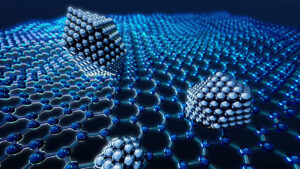Scale of Kingsland’s Leliyn graphite discovery underpinned by high-grades and big widths

Core samples will be sent for metallurgical tests to confirm the graphite is suitable for use in lithium batteries. Pic via Getty Images
- High-grade diamond drill core assays confirm earlier RC drilling assays
- Diamond and RC drilling is ongoing to infill and extend the known mineralisation
- Results will form part of the maiden resource estimate at Leliyn
Super thick and high grade assays from the first two diamond holes at Leliyn confirm the project is emerging as a globally significant discovery.
Kingsland Minerals (ASX:KNG) is continuing to prove up the scale of its promising Leliyn discovery in the Northern Territory ahead of a maiden resource.
In line with recent reverse circulation (RC) drilling, diamond hole 1 returned a massive 132m at 8.7% from surface, including 94m at 10.8% from 31m.
Meanwhile, hole 2 hit 126m at 7.6% from 52m, including 53m at 11.1% from 117m.
These results confirm there are substantial tonnages of high-grade graphite mineralisation at Leliyn.
Earlier this month, the company consistently high more than 10% TGC with a standout intersection of 158m at 10.1% TGC from 16m, and 128m at 8.6% from 45m, including 86m at 10.9% from 87m.
A giant graphite discovery emerges
“These results are important results because they continue to show Leliyn is emerging as a globally significant graphite discovery with very high grades,” KNG managing director Richard Maddocks says.
“They will also form part of the maiden resource estimate and the core will be used for more detailed metallurgical test-work.”
Feeding the battery market
This testing is very important, as the process from the mine to battery is nothing short of complex.
First, graphite ore is processed into a flake concentrate, which is then shaped into a process called spheronisation’, where it has to be purified to 99.5 per cent.
Then these particles must be coated. Once coated, spherical purified graphite is called ‘active anode material’. Now it is ready for sale to a cell maker.
On the horizon
Small sections of core have been submitted for thin section petrographic analysis and these are expected to be released as they are received and assessed, Kingsland says.
The next step is to collect representative samples from the diamond drill core and submit these for flotation test-work.
These tests will establish the viability of the graphitic schist to produce a graphite concentrate of a quality that is amenable to further downstream purifying and processing with the targeted final product being purified spherical graphite for use as battery anode material in lithium-ion batteries.
This article was developed in collaboration with Kingsland Minerals, a Stockhead advertiser at the time of publishing.
This article does not constitute financial product advice. You should consider obtaining independent advice before making any financial decisions.
Related Topics

UNLOCK INSIGHTS
Discover the untold stories of emerging ASX stocks.
Daily news and expert analysis, it's free to subscribe.
By proceeding, you confirm you understand that we handle personal information in accordance with our Privacy Policy.








